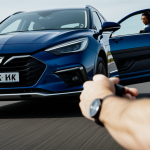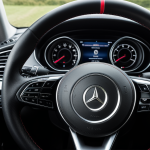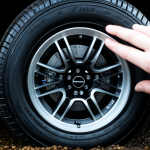Ensuring Accurate Calibration for Collision Avoidance Systems
Precision in ADAS calibration is critical for the effective operation of collision avoidance technology. Accurate calibration procedures ensure sensors such as radar, lidar, and cameras correctly detect obstacles and relay information to the vehicle’s safety systems. Without precise calibration, these systems may fail to react appropriately, increasing the risk of accidents.
Key calibration methods involve static and dynamic procedures. Static calibration requires the vehicle to be positioned carefully, often in controlled environments that meet specific lighting and spatial criteria. Dynamic calibration, on the other hand, involves real-time adjustments while the vehicle is in motion, allowing sensors to align accurately with road conditions.
Also read : Enhancing Lane-Keeping Assist: Tailoring Vehicle Settings for Optimal Performance on Rural UK Roads
The impact on vehicle safety from improper calibration cannot be overstated. Misaligned sensors can cause false alerts or missed detections, undermining driver trust and increasing liability. Rigorous calibration protocols help maintain system reliability and support compliance with safety standards.
In summary, thorough and precise calibration is fundamental to maximizing the benefits of collision avoidance technology. This ensures advanced driver-assistance systems function flawlessly, providing drivers with enhanced protection on every journey.
In the same genre : Enhance Your Vehicle’s Safety: The Complete Handbook for Mastering Your Automatic Emergency Braking System
Essential Tools and Equipment for Calibration
Accurate ADAS calibration relies heavily on specialized calibration tools for collision avoidance systems. These tools ensure sensors like radar and cameras are precisely aligned, which is pivotal for vehicle safety. Core ADAS calibration equipment typically includes sensor targets, diagnostic scanners, and alignment devices designed to interface with the vehicle’s onboard systems.
Industry-standard equipment provides the capability to perform both static and dynamic calibration procedures. For example, diagnostic scanners communicate with the vehicle’s ECU to confirm sensor accuracy after adjustments, while sensor targets allow technicians to set precise angles and distances during calibration.
The choice between OEM and aftermarket calibration systems is significant. OEM tools are tailored to specific vehicle makes and models, offering higher accuracy and compatibility. Aftermarket tools, while often less costly, may not support all system features or comply fully with manufacturer protocols, potentially impacting calibration quality.
Understanding the correct use of these devices enhances technician efficiency and aids in maintaining consistent calibration procedures. This reduces errors and ensures collision avoidance technology functions reliably for every driver. Investing in high-quality calibration equipment is essential to uphold safety standards and system integrity across all vehicle types.
Step-by-Step Guide to Calibrating Collision Avoidance Technology
Successful step-by-step ADAS calibration begins with thorough preparation. First, ensure the vehicle is on a flat surface within a well-lit space, free from obstructions that could interfere with sensors. Confirm tire pressure and suspension settings meet manufacturer specifications, as these affect sensor alignment and overall vehicle safety.
The calibration process focuses on key sensor systems: radar, cameras, and lidar. Each requires precise adjustment using specialized equipment. Start with static calibration—position calibration targets at specific distances and angles dictated by the vehicle’s service manual. Then, perform dynamic calibration when necessary, such as driving under controlled conditions to allow onboard computers to fine-tune sensor parameters.
Throughout calibration, follow vehicle safety calibration best practices by verifying sensor input accuracy through live diagnostics. Check for fault codes or warning indicators after calibration to guarantee systems respond correctly. If errors appear, re-examine the setup, as minor deviations can compromise safety.
Final validation steps involve test-driving and confirming sensors detect obstacles properly. This systematic approach reduces errors and ensures collision avoidance technology operates with maximum reliability, protecting drivers and pedestrians alike.
Troubleshooting Calibration Challenges
Encountering challenges during ADAS calibration is common but manageable with structured troubleshooting. One frequent issue is sensor misalignment, which often results in inaccurate obstacle detection or false alerts. To diagnose this, technicians should first verify sensor positions against manufacturer specifications using precise measurement tools included in calibration tools for collision avoidance.
Another common problem involves software faults that disrupt communication between sensors and vehicle control units. Checking for diagnostic codes using vehicle diagnostics systems can pinpoint errors. Once identified, recalibrating or updating software often resolves these faults.
Understanding when to perform recalibration is vital. After any collision repair or sensor replacement, or when calibration warnings appear, recalibration should be prioritized to restore full system functionality. Ignoring these steps may compromise vehicle safety and undermine the reliability of collision avoidance technology.
Effective troubleshooting integrates both mechanical adjustments and software diagnostics. Combining these approaches ensures that calibration errors are fixed quickly, maintaining system accuracy. Mastery of these protocols supports ongoing ADAS calibration quality and builds driver confidence in vehicle safety systems.
Compliance Standards and Industry Guidelines
Collision avoidance technology calibration must adhere to strict collision avoidance system standards to guarantee safety and regulatory compliance. These standards define precise benchmarks for sensor alignment, calibration procedures, and system functionality. Following ADAS compliance guidelines helps ensure consistency across manufacturers and service providers.
Industry regulations require detailed documentation during calibration, including measurements and diagnostic results. These records are critical for liability in case of vehicle accidents and inspections. Manufacturer-specific calibration protocols often specify exact tools, environmental conditions, and steps, underscoring the importance of tailored calibration procedures.
Ignoring vehicle calibration regulations can result in system malfunctions, compromised vehicle safety, and potential legal consequences. For example, regulators may mandate recalibration after repairs affecting sensor placement or system performance. Service centers must remain current with evolving standards to maintain certification and trust.
In summary, understanding and implementing relevant collision avoidance system standards and ADAS compliance measures are essential for safe, reliable operation. This ensures calibration work meets legal requirements while maintaining the highest vehicle safety standards.
Maintaining System Accuracy and Reliability
Sustaining calibration integrity is crucial for system reliability in collision avoidance technology. Preventive maintenance involves routine inspections to detect sensor drift or environmental factors that could impair vehicle safety systems. Regularly verifying sensor alignment and software updates ensures continued precision of the advanced driver-assistance systems.
Monitoring protocols include periodic diagnostic checks using vehicle safety system upkeep tools. These scans detect inconsistencies in sensor data or communication errors that may signal calibration degradation. Addressing minor deviations early prevents larger malfunctions, reducing downtime and repair costs.
Additional maintenance measures involve cleaning sensor surfaces to remove dirt or debris that could obscure detection, and confirming mounting hardware remains secure. Technicians should integrate these upkeep tasks into scheduled service routines for consistent performance.
Prioritizing ongoing ADAS calibration accuracy supports drivers’ trust by maintaining optimal collision avoidance capabilities. This proactive approach minimizes risks related to sensor misalignment or system failure, improving overall vehicle safety on the road. Maintaining a reliable calibration history also assists in compliance and warranty considerations, reinforcing the importance of systematic vehicle safety system upkeep.











